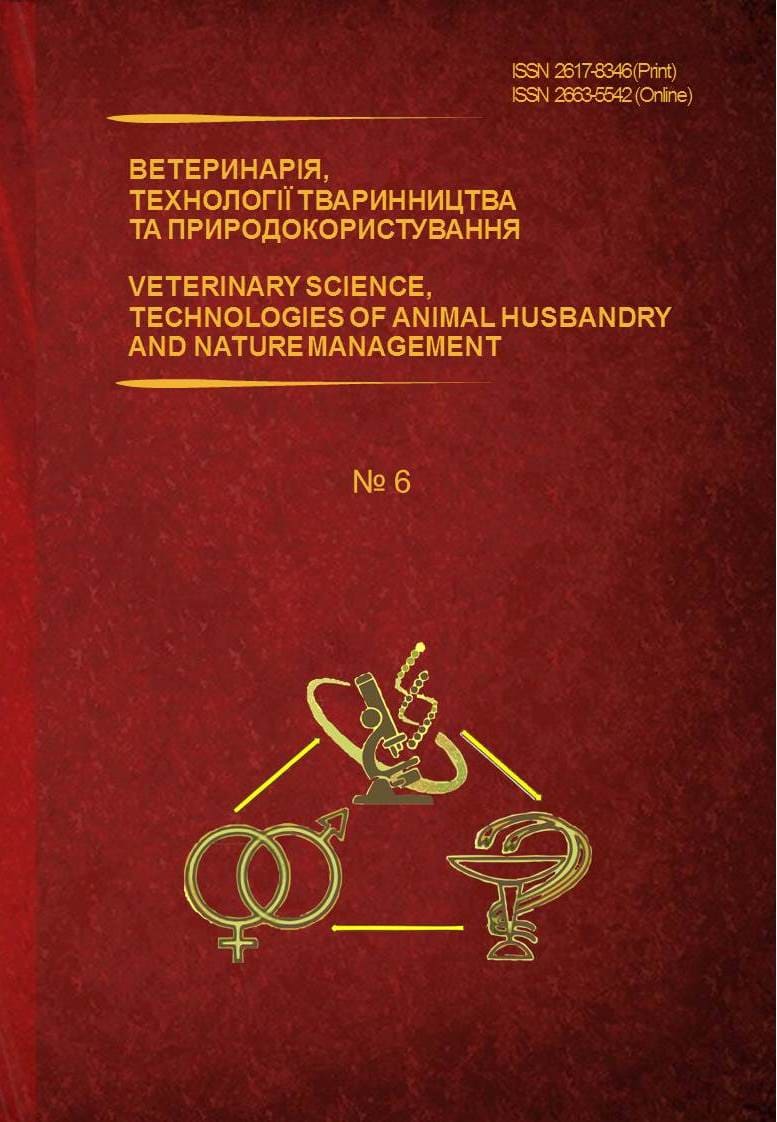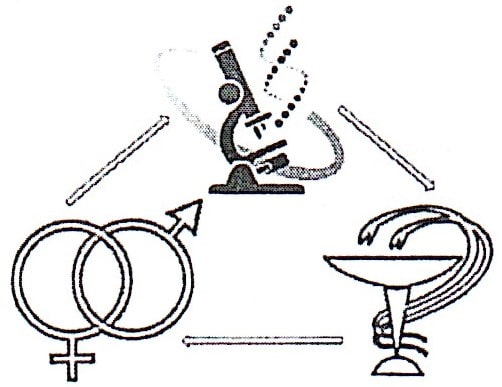Оцінка ефективності препарату «АкароKILL» проти іксодових кліщів
Анотація
Топікальне нанесення препарату «АкароKILL» (краплі протипаразитарні), виробництва «ПрАТ «ВНП «Укрзооветпромпостач», у рекомендованих виробником дозах, кратності та способі застосування, сприяло загибелі іксодових кліщів, які нападали на собак дослідної групи вже через добу після його застосування. Тривалість акарицидної дії становила 30 діб.
Завантаження
Посилання
Arisov, M. V., & Arhipov, I. A. (2018). Metody opredelenija jeffektivnosti insekticidov, akaricidov, reguljatorov razvitija i repellentov pri jektoparazitozah plotojadnyh zhivotnyh. Rossijskij parazitologicheskij zhurnal, 12, 1, 81–97. [in Russian]
Baylis, M. (2017). Potential impact of climate change on emerging vector-borne and other infections in the UK. Environ Health, 16, 112. DOI: 10.1186/s12940-017-0326-1.
Becskei, C., Fias, D., Mahabir, S. P., & Farkas, R. (2020). Efficacy of a novel oral chewable tablet containing sarolaner, moxidectin and pyrantel (Simparica Trio™) against natural flea and tick infestations on dogs presented as veterinary patients in Europe. Parasit Vectors, 13(1), 72. DOI: 10.1186/s13071-020-3946-1.
Beugnet, F, & Chalvet-Monfray, K. (2013). Impact of climate change in the epidemiology of vector-borne diseases in domestic carnivores. CIMID, 36, 559–566. DOI: 10.1016/j.cimid.2013.07.003.
Beugnet, F., & Franc, M. (2012). Insecticide and acaricide molecules and/or combinations to prevent pet infestation by ectoparasites. Trends Parasitol., 28, 267–279. DOI: 10.1016/j.pt.2012.04.004.
Beugnet, F., Halos, L., Larsen, D., Labuschagné, M., Erasmus, H., & Fourie, J. (2014). The ability of an oral formulation of afoxolaner to block the transmission of Babesia canis by Dermacentor reticulatus ticks to dogs. Parasit Vectors, 7, 283. DOI: 10.1186/1756-3305-7-283.
Brites-Neto, J., Duarte, K. M. R., & Martins, T. F. (2015). Tick-borne infections in human and animal population worldwide. Vet. World, 8, 301–315. DOI: 10.14202/vetworld.2015.301-315.
Coles, T. B., & Dryden, M. W. (2014). Insecticide/acaricide resistance in fleas and ticks infesting dogs and cats. Parasites Vectors, 7, 8. DOI: 10.1186/1756-3305-7-8.
Dantas-Torres, F., Chomel, B.B. & Otranto, D. (2012). Ticks and tick-borne diseases: A one health perspective. Trends Parasitol., 28 (10), 437-446. DOI: 10.1016/j.pt.2012.07.003.
Day, M. J. (2016). Arthropod-borne Infectious Diseases of the Dog and Cat, 2nd Edition. Taylor & Francis Group, LLC, 209.
Foil, L. D., Coleman, P., Eisler, M., Fragoso-Sanchez, H., Garcia-Vazquez, Z., Guerrero, F. D., Jonsson, N. N., Langstaff, I. G., Li, A. Y., & Machila, N. (2004). Factors that influence the prevalence of acaricide resistance and tick-borne diseases. Vet. Parasitology, 125(1-2), 163–181. DOI: 10.1016/j.vetpar.2004.05.012.
Georg, G., Duschera, M., Leschnikb, H.-P., & Fuehrera, A. J. (2015). Wildlife reservoirs for vector-borne canine, feline and zoonotic infections in Austria International. Journal for Parasitology: Parasites and Wildlife, 4 (1), 88–96. DOI: 10.1016/j.ijppaw.2014.12.001.
Khan, M. (2015). Important vector-borne diseases with their zoonotic potencial: present situation and future perspective. Bangl. J. Vet. Med., 13 (2), 1–14. DOI: 10.3329/bjvm.v13i2.26614.
Nepoklonov, A. A., & Talanov, G. A. (1973). Metodicheskie ukazanija po ispytaniju pesticidov, prednaznachennyh dlja bor'by s jektoparazitami zhivotnyh. Moskva. [in Russian]
Pfister, K, & Armstrong, R. (2016). Systemically and cutaneously distributed ectoparasiticides: a review of the efficacy against ticks and fleas on dogs. Parasit Vectors, 9(1), 436. DOI: 10.1186/s13071-016-1719-7.
Piesman, J, & Eisen, L. (2008). Prevention of tick-borne diseases. Annu Rev Entomol, 53, 323–343. DOI: 10.1146/annurev.ento.53.103106.093429.
Rohdich, N., Roepke, R. K., & Zschiesche, E. (2014). A randomized, blinded, controlled and multi-centered field study comparing the efficacy and safety of Bravecto™ (fluralaner) against Frontline™ (fipronil) in flea- and tick-infested dogs. Parasites Vectors, 7, 83. DOI: 10.1186/1756-3305-7-83.
Solano-Gallego, L., Sainz, Á., Roura, X., Estrada-Peña, A., & Miró, G. (2016). A review of canine babesiosis: the European perspective. Parasit Vectors, 9, 336. DOI: 10.1186/s13071-016-1596-0.
Varloud, M., Liebenberg, J., & Fourie, J. (2018). Early Babesia canis transmission in dogs within 24 h and 8 h of infestation with infected pre-activated male Dermacentor reticulatus ticks. Parasites Vectors, 11, 41. DOI: 10.1186/s13071-018-2637-7.
Zając, V., Wójcik-Fatla, A., Sawczyn, A., Cisak, E., Sroka, J., Kloc, A., Zając, Z., Buczek, A., Dutkiewicz, J., & Bartosik K. (2017). Prevalence of infections and co-infections with 6 pathogens in Dermacentor reticulatus ticks collected in eastern Poland. Ann Agric Environ Med., 24, 26–32. DOI: 10.5604/12321966.1233893.
Zhang, Z.-Q. (2013). Phylum Arthropoda, Animal Biodiversity: An Outline of Higher-level Classification and Survey of Taxonomic Richness Zootaxa, 3703, 1, 1–82. DOI: 10.11646/zootaxa.3703.1.6.
Переглядів анотації: 1074 Завантажень PDF: 736





